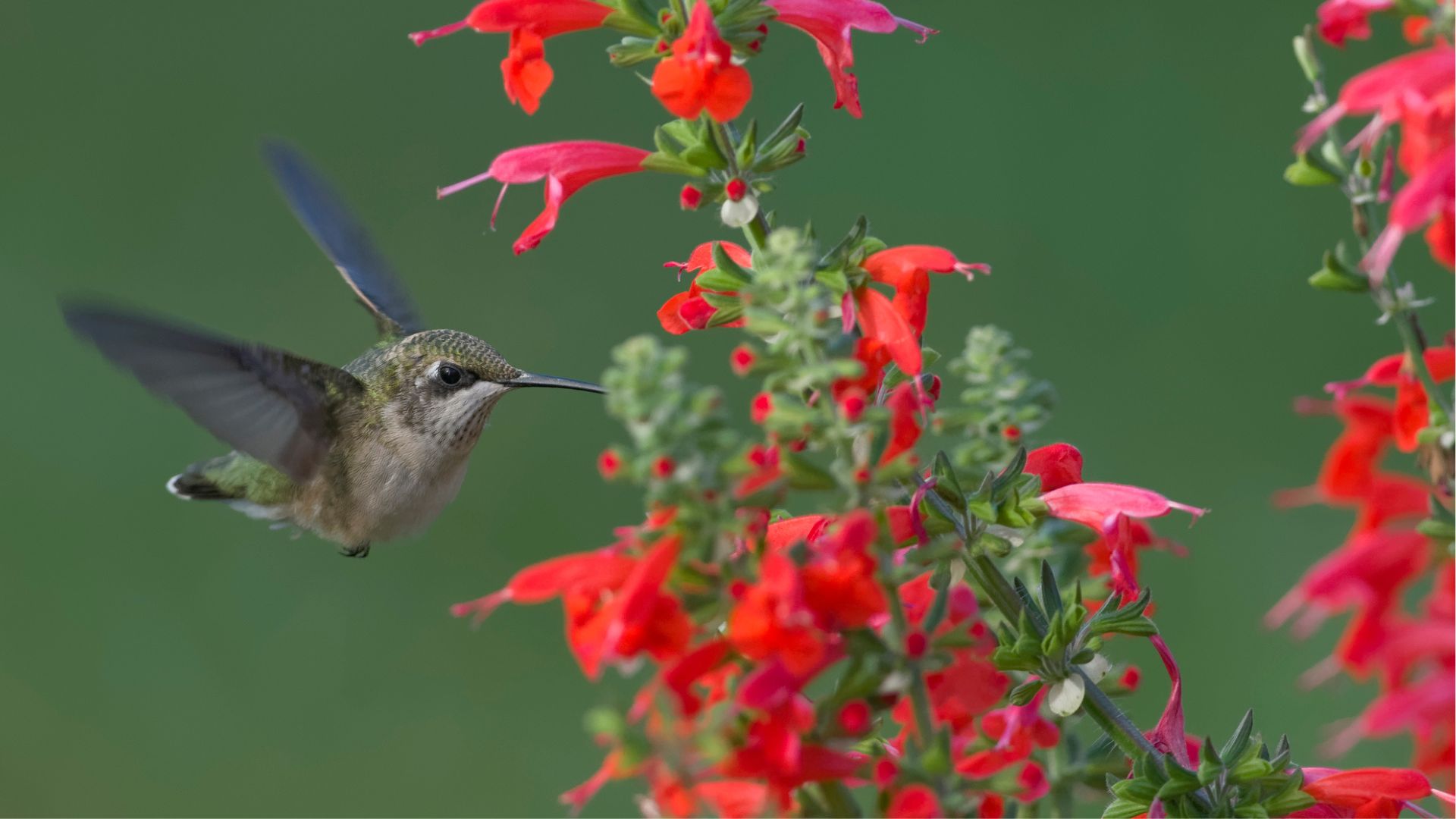Scarlet Sage Care: Tips For Growing Scarlet Sage Plants
Get the know how to grow and nurture this this effortless addition to the salvia family, beloved by both butterflies and hummingbirds.


When planning or adding to the butterfly garden, don't forget about growing scarlet sage. This dependable, long lasting mound of red tubular flowers draws butterflies and hummingbirds by the dozens.
Caring for a scarlet sage plant is simple and easy enough for the busiest of gardeners. Some scarlet sage plants are native to the southern United States, and while they grow prolifically with the right care, scarlet sage herb is not aggressive or invasive. Scarlet sage plants, Salvia coccinea or Salvia splendens, are also known as scarlet salvia. One of the easiest salvias to find, plant the spiky specimen spring through summer, or even as late as fall in warmer areas. Scarlet sage herb is a perennial, but is grown as an annual plant in areas with cold winters. In cold winter areas, plant scarlet sage in spring for long-lasting enjoyment.
Growing Scarlet Sage
Start scarlet sage from seed or small bedding plants from the local nursery. Check the tag in the pot, as scarlet sage herb comes in colors of pinks and whites, as well as red. When growing from seed, press seeds lightly into the soil or cover with perlite, as seeds need light to germinate. Start seeds of scarlet sage herb indoors in peat pots a few weeks before outdoor temperatures warm. Seedlings can be planted outside when both air and soil temperatures warm.
Grow scarlet sage plants in sandy loam, rocky soil or fertile soil that drains well. Scarlet sage plants grow best in a full sun area, but also perform well in a partially shaded location. Use them in rock gardens, borders, mass plantings and with other salvias.
Reaching 2 to 4 feet (.6-1.2 m.) in height, with a spread of 1 to 2 feet (.3-.6 m.), scarlet sage plants occupy their designated area without taking over the bed, as some members of the mint family are prone to do.
Scarlet Sage Care
Caring for a scarlet sage plant includes regular pinching or trimming of spent flower spikes, encouraging further blooms. Regular watering of the salvia herb is necessary if it does not rain. Salvias in containers may need watering daily during the hottest summer days.
Scarlet sage care includes fertilization. Incorporate time release fertilizer when planting scarlet sage herb in spring, for nutrients to last throughout the growing season, or use a balanced fertilizer according to label directions.
Gardening tips, videos, info and more delivered right to your inbox!
Sign up for the Gardening Know How newsletter today and receive a free copy of our e-book "How to Grow Delicious Tomatoes".

Becca Badgett was a regular contributor to Gardening Know How for ten years. Co-author of the book How to Grow an EMERGENCY Garden, Becca specializes in succulent and cactus gardening.
-
 4 Superfast Composting Methods: Turn Waste Into Garden Gold In 30 Days Or Less
4 Superfast Composting Methods: Turn Waste Into Garden Gold In 30 Days Or LessTry the fastest composting methods to turbocharge your pile and transform kitchen scraps and garden waste into finished compost in just a few weeks.
By Mary Ellen Ellis
-
 Best Spider Plant Soil – Complete Soil Guide And Expert Tips For Keeping Plants Happy
Best Spider Plant Soil – Complete Soil Guide And Expert Tips For Keeping Plants HappySpider plants are fun and easy plants to grow, but what is the best soil for a spider plant? Selecting the right soil is important so they can thrive.
By Bonnie L. Grant